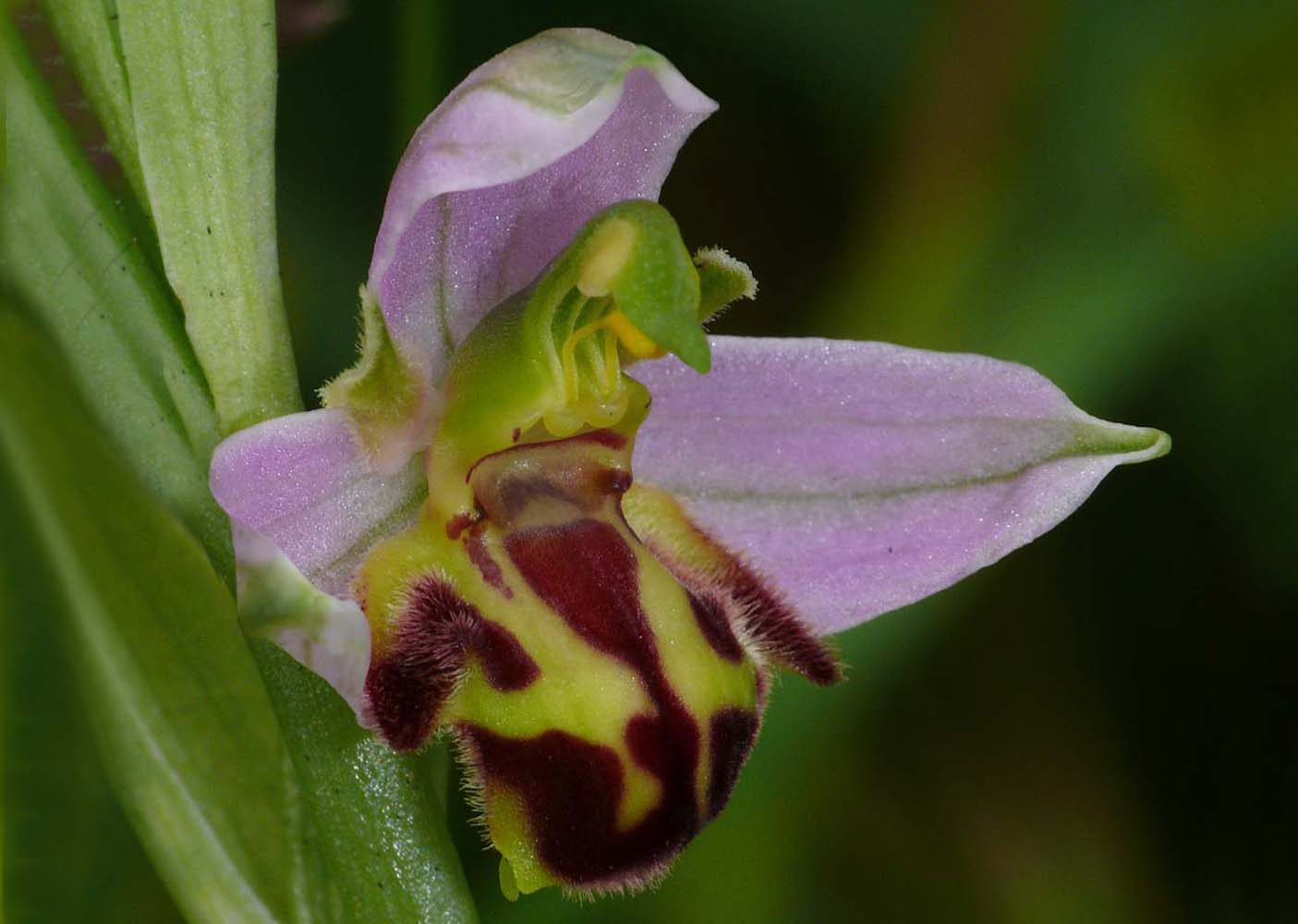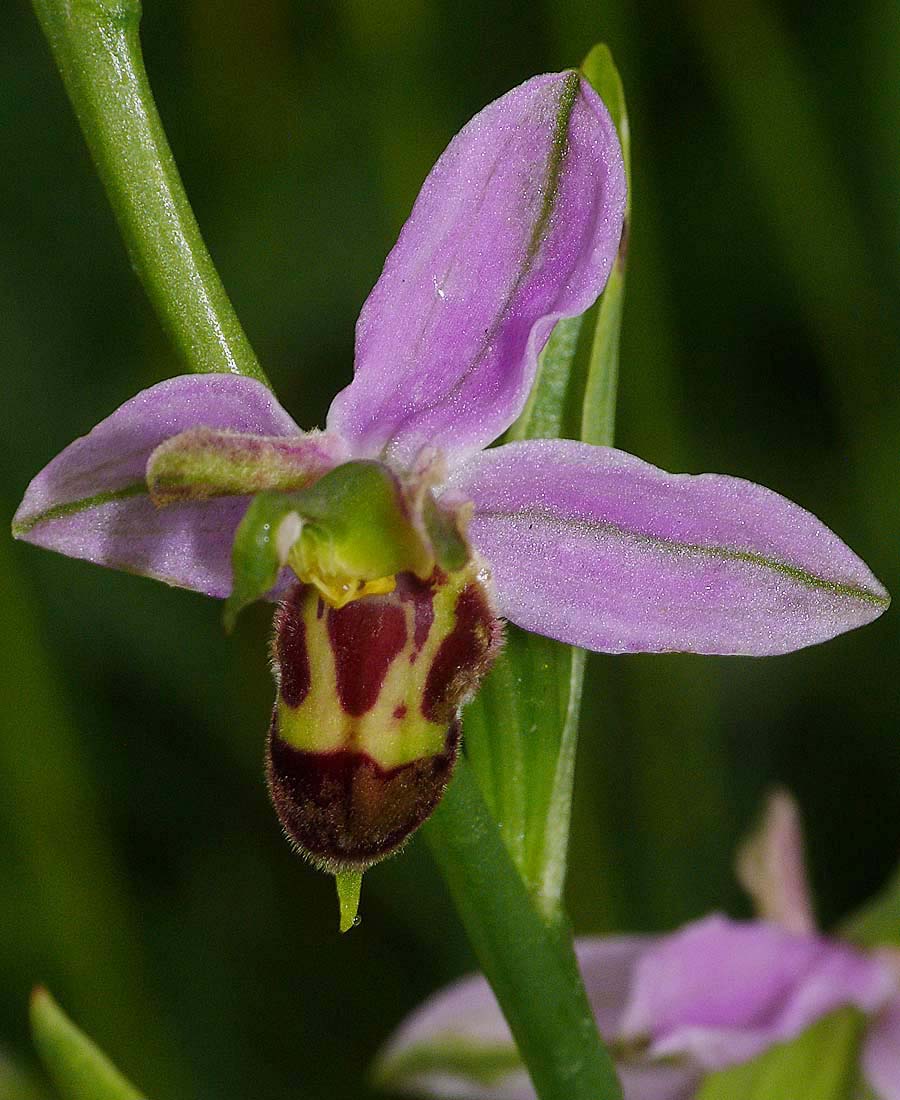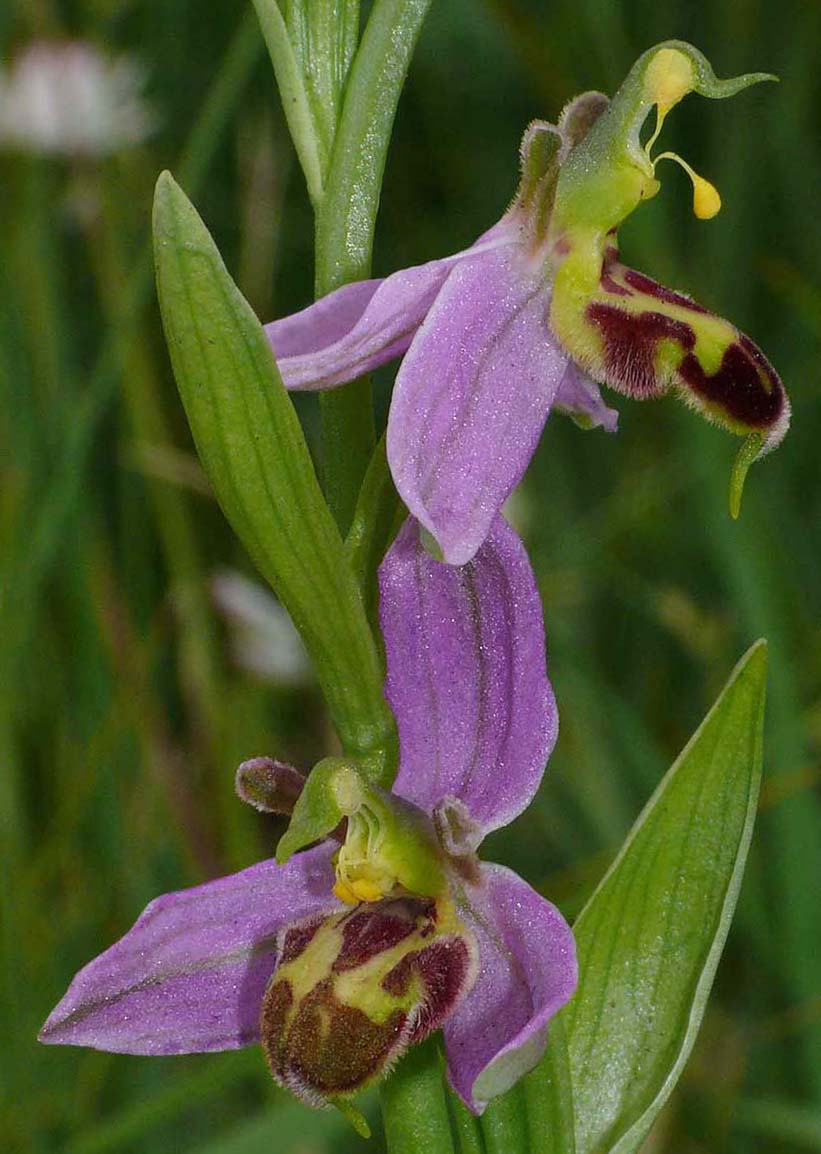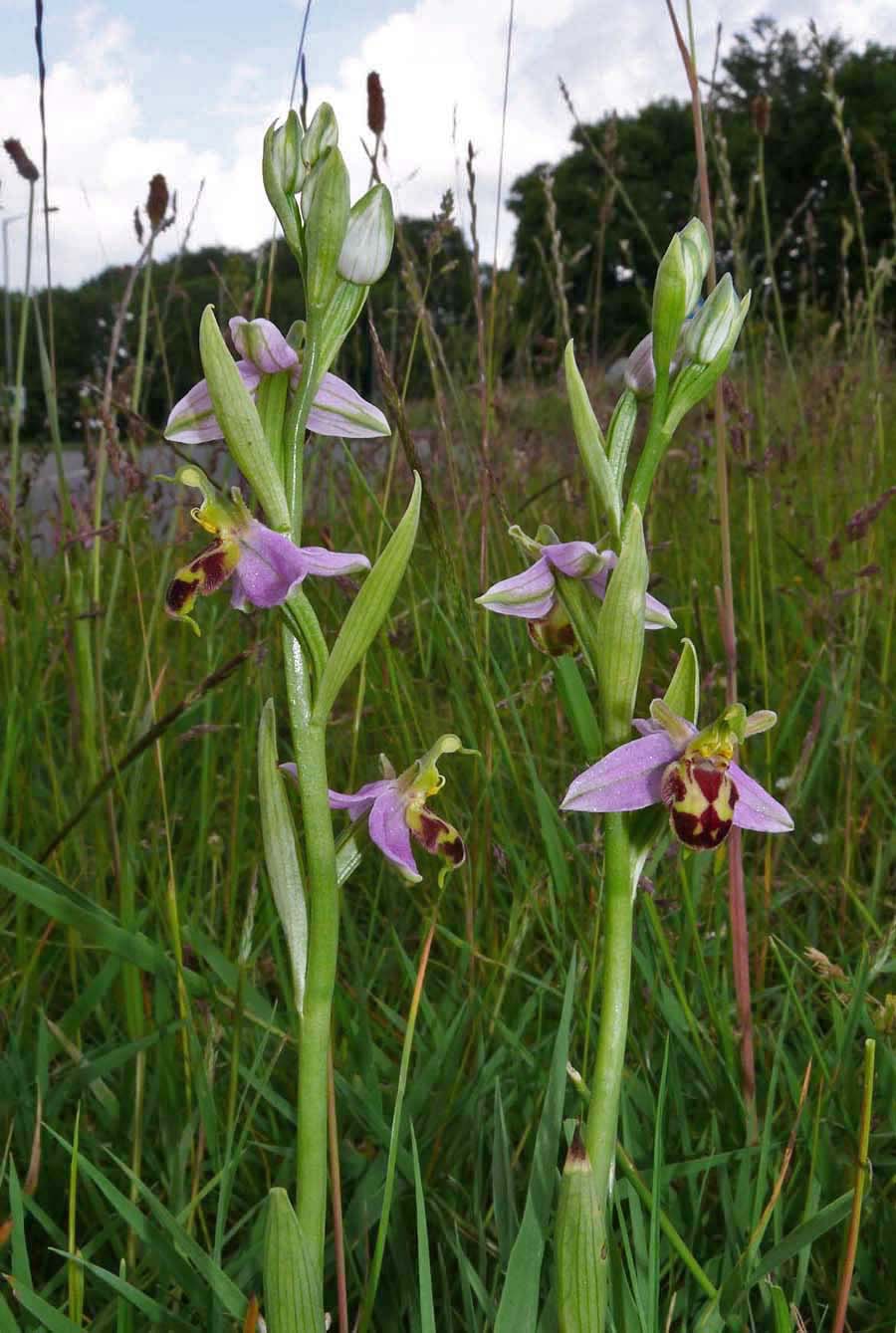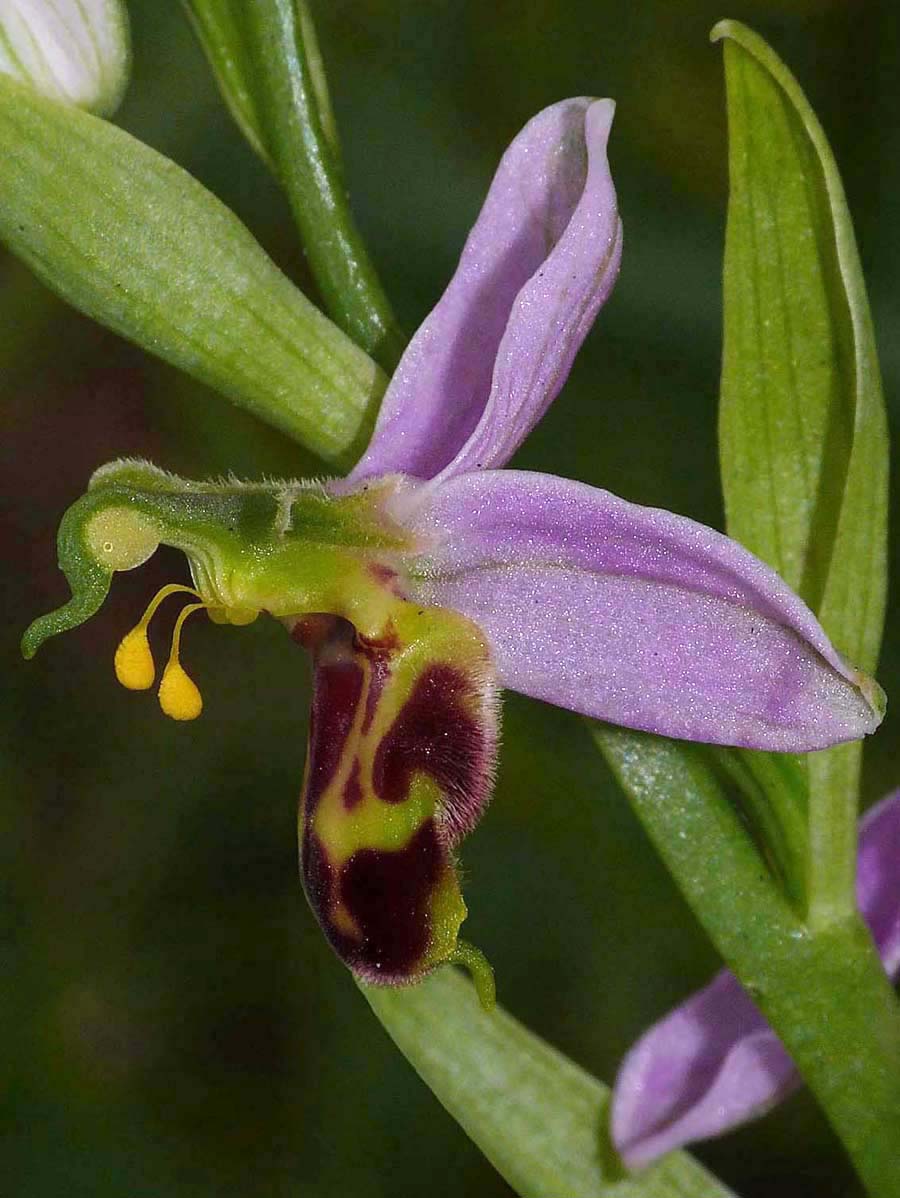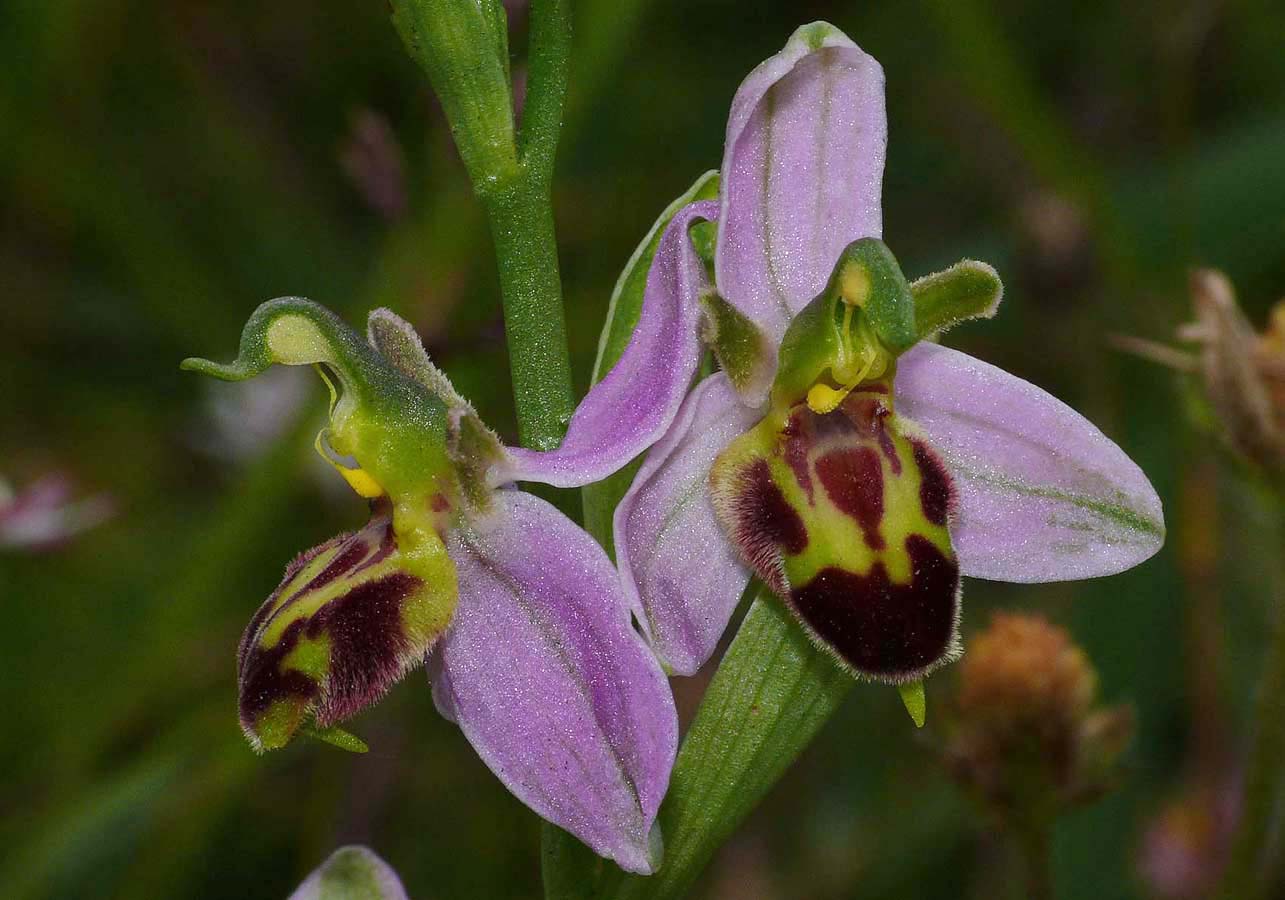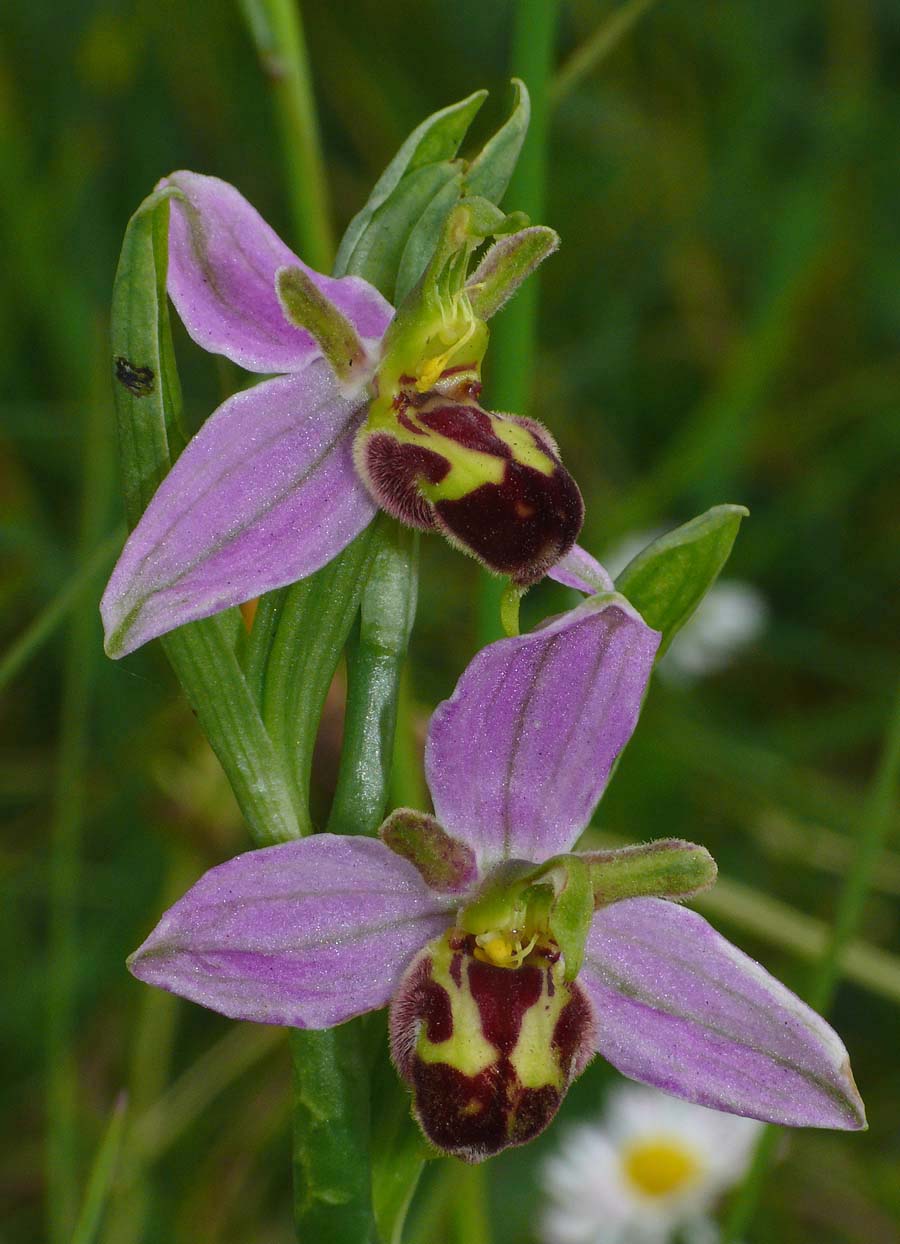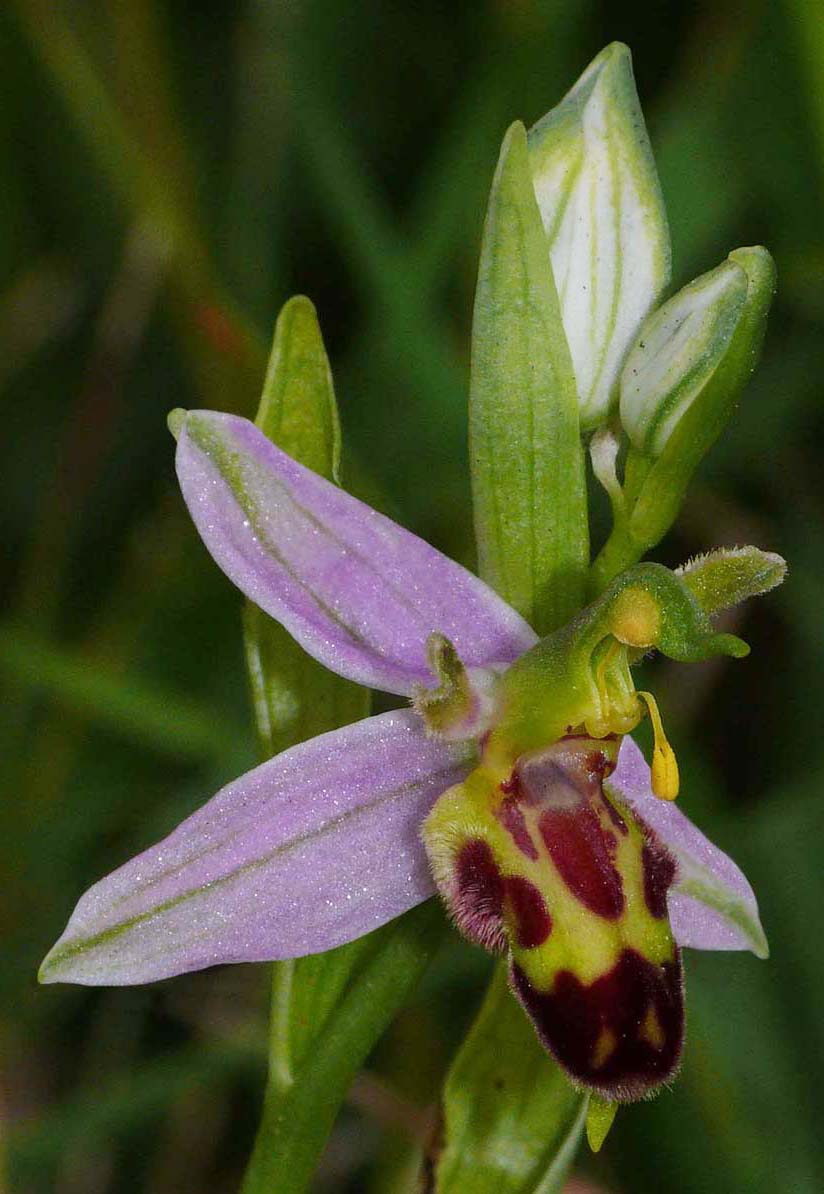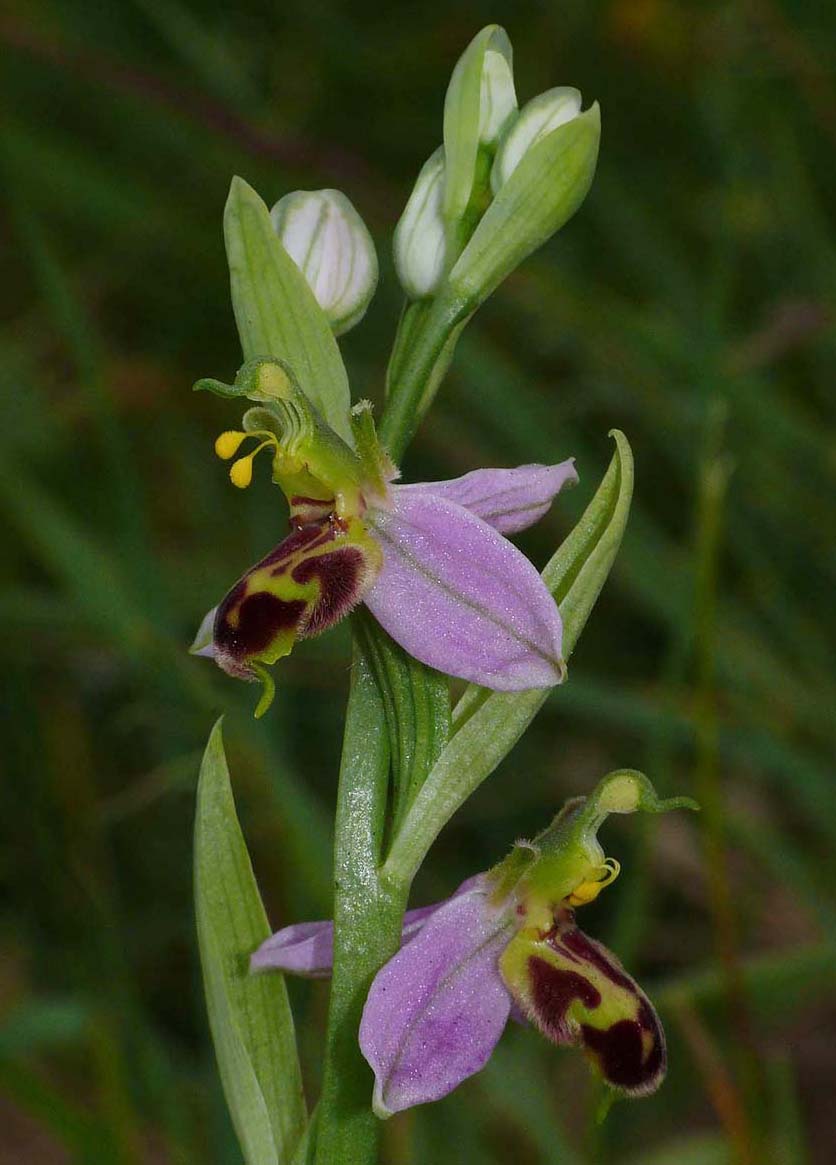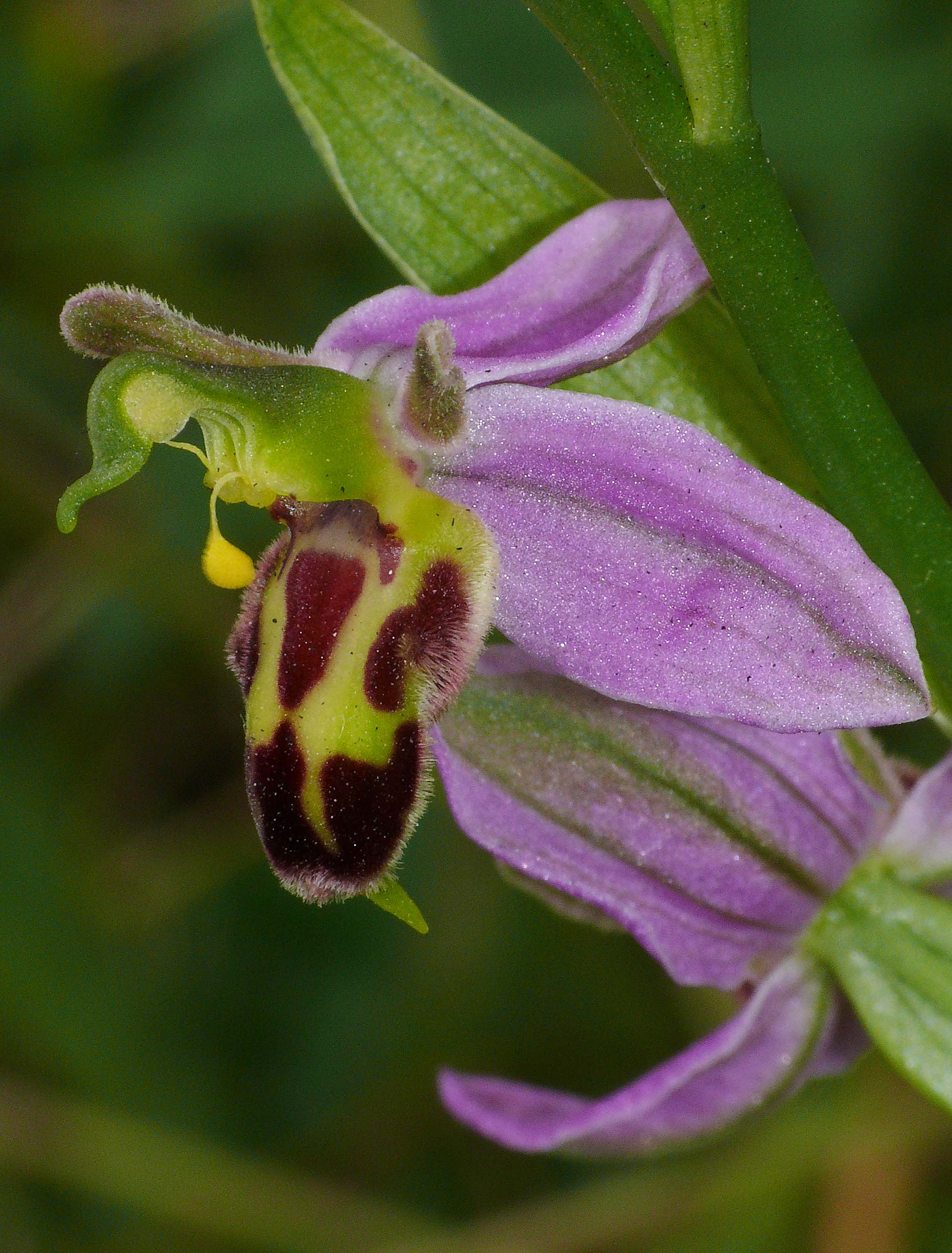O. apifera was
first described by Hudson from England as far back as 1762. Its
name refers to the flowers similarity to a bee and accordingly
the species has long been commonly known as
the Bee Orchid.
It is a widespread orchid distributed across temperate and Mediterranean Europe as far east as the Caucasus. In its favoured locations it can be abundant and its choice of habitat is wide, ranging from the driest chalk grassland/garrigue to wet, even swampy conditions. It prefers a full sun position but will tolerate even significant shade. Sepal colouration is normally pale pink but white is not uncommon and in the Balkans, white can be dominant, with pink a real rarity. O. apifera is largely self pollinating and this autogamy seems responsible for the frequent appearance of variant plants, some of which, although not of evolutionary significance, occur on a sufficiently regular basis to have acquired formal varietal status.
O. apifera var. belgarum was first discovered by Messrs Jenkinson and Laurence on a chalky roadside verge near Winchester, England and was subsequently described by D. M. Turner Ettlinger in 1998. Its name literally means "of the Belgae", this being a Celtic tribe who in Roman times lived in the vicinity of Venta Belgarum, now better known as Winchester. This variety is uncommon but although formerly thought to be restricted to this Southern area of chalk downland in Hampshire, is now known from several other locations in England and Wales. It is however extremely rare outside the UK and known from only a handful of sites in Europe. It differs from type in several significant ways :- 1. the labellum markings are yellower, more extensive and often somewhat disintegrated. 2. the basal field is absent with an incomplete necklace. 3. the lip is longer and more pointed at the tip 4. the shoulders are hairy 5. the lateral lobes are less well developed and not forward pointing.
It is a widespread orchid distributed across temperate and Mediterranean Europe as far east as the Caucasus. In its favoured locations it can be abundant and its choice of habitat is wide, ranging from the driest chalk grassland/garrigue to wet, even swampy conditions. It prefers a full sun position but will tolerate even significant shade. Sepal colouration is normally pale pink but white is not uncommon and in the Balkans, white can be dominant, with pink a real rarity. O. apifera is largely self pollinating and this autogamy seems responsible for the frequent appearance of variant plants, some of which, although not of evolutionary significance, occur on a sufficiently regular basis to have acquired formal varietal status.
O. apifera var. belgarum was first discovered by Messrs Jenkinson and Laurence on a chalky roadside verge near Winchester, England and was subsequently described by D. M. Turner Ettlinger in 1998. Its name literally means "of the Belgae", this being a Celtic tribe who in Roman times lived in the vicinity of Venta Belgarum, now better known as Winchester. This variety is uncommon but although formerly thought to be restricted to this Southern area of chalk downland in Hampshire, is now known from several other locations in England and Wales. It is however extremely rare outside the UK and known from only a handful of sites in Europe. It differs from type in several significant ways :- 1. the labellum markings are yellower, more extensive and often somewhat disintegrated. 2. the basal field is absent with an incomplete necklace. 3. the lip is longer and more pointed at the tip 4. the shoulders are hairy 5. the lateral lobes are less well developed and not forward pointing.

